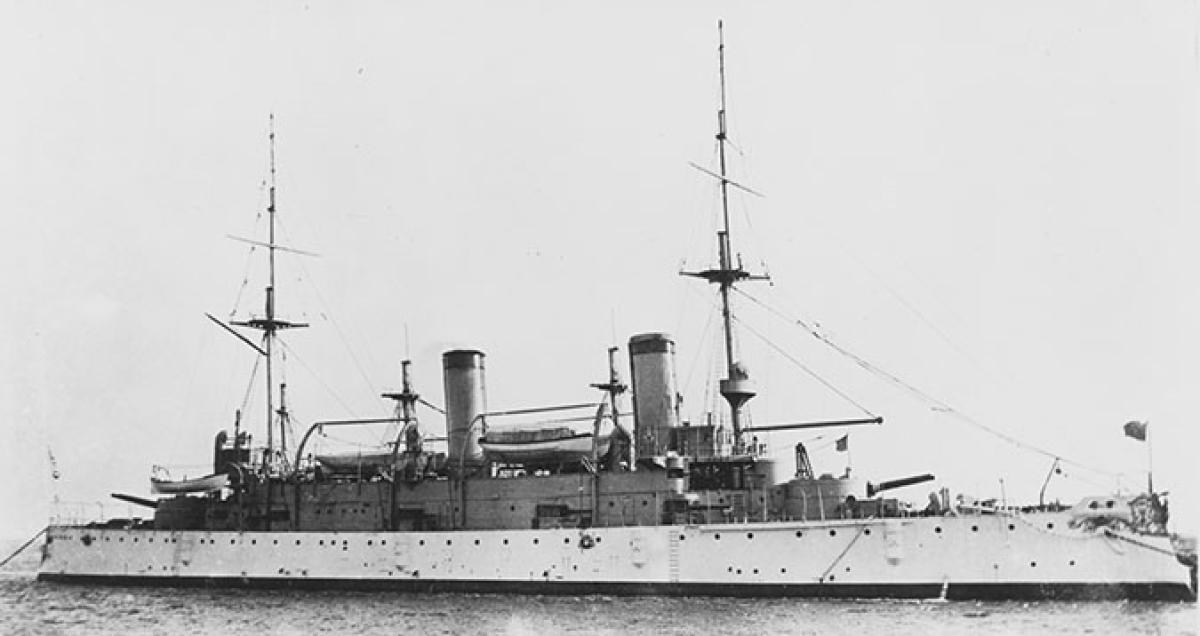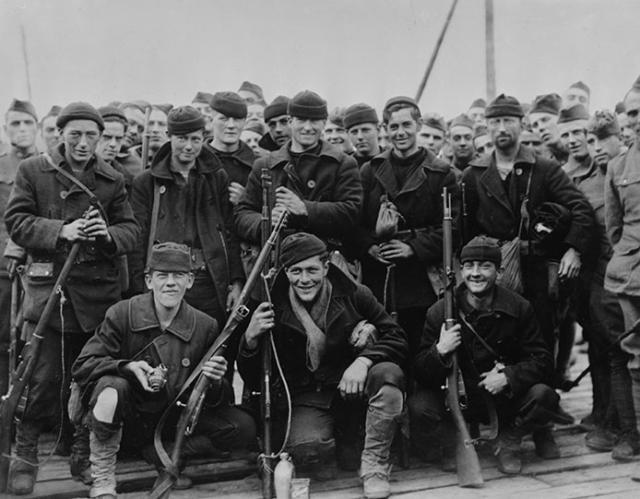On 6 April 1917, the USS Olympia (C-6) was in transit, sailing from St. Thomas, Virgin Islands to Hampton Roads, Virginia. A gale was blowing from the southwest and the ship had to be secured for heavy weather. It was also the day Congress declared war against Germany.
For the next nineteen months, USS Olympia sailors assisted with U.S. war efforts by participating in convoy patrols in the North Atlantic. The day that the Armistice was signed the ship was in Murmansk, Russia and a portion of her crew had spent the previous few months on land fighting the Bolsheviks.
Who were the sailors aboard the USS Olympia during this period? Where did they come from and what did they do after the war?
Ensign Donald Hicks led the detachment of USS Olympia seamen who accompanied the North Russia expeditionary forces in 1918 and was subsequently awarded the Navy Cross for this operation. Ensign Hicks also stayed in Russia when the USS Olympia departed Murmansk on 13 November 1918. Per the ship’s log, he was on special temporary duty.
What was Ensign Hicks doing in Russia after the Armistice was signed? How long did he stay there and how did he get home?
The Flagship Olympia Foundation is trying to answer all these questions. We know that he made it back to the U.S. and after the war, Ensign Hicks worked at the Camden Iron and Enamelware Factory in Camden, New Jersey. The USS Olympia was decommissioned in Philadelphia in 1922. The city is across the river from Camden so Mr. Hicks never lost sight of the ship he once served on.
We also know that the World War I USS Olympia crew included Charles Bolden, the son of famed Louisiana jazz musician Buddy Bolden, drummer Arthur “Zutty” Singleton, and clarinet player Albert Nicholas. Zutty Singleton performed jazz with Louis Armstrong and Fats Waller in the inter-war years.
Albert Nicholas enlisted in the Navy in 1916 and was in Cuba when the U.S. declared war. He then transferred to the USS Olympia and participated in convoy duty in the North Atlantic. Like Singleton, Nicholas performed with Armstrong. And both Singleton and Nicholas performed with Jelly Roll Morton.
Bolden, Singleton, and Nicholas were born in Louisiana, the home of Plessy v. Ferguson. The Supreme Court case which upheld the doctrine of separate but equal, a practice also supported by President Wilson during World War I.
So what was life like for these men? There are very few official documents describing the life of an African-American sailor during the war years and that gap in knowledge is something the Flagship Olympia Foundation is working hard to correct.
Two Navy ships still exist from this period, the USS Olympia, berthed in Philadelphia, Pennsylvania, and the USS Texas (BB-35), berthed in San Jacinto, Texas. If your grand-father, great grand-father, or great great grand-father served aboard the USS Olympia, please share their letters and photos with us.
When the war ended in November 1918, USS Olympia sailors returned to civilian life. They got married and had children, but they never forgot about their service in the Navy. Sharing their letters and photos helps preserve their memories and also helps educate the younger generation about a war many know little about.
Visit our website at click here.




